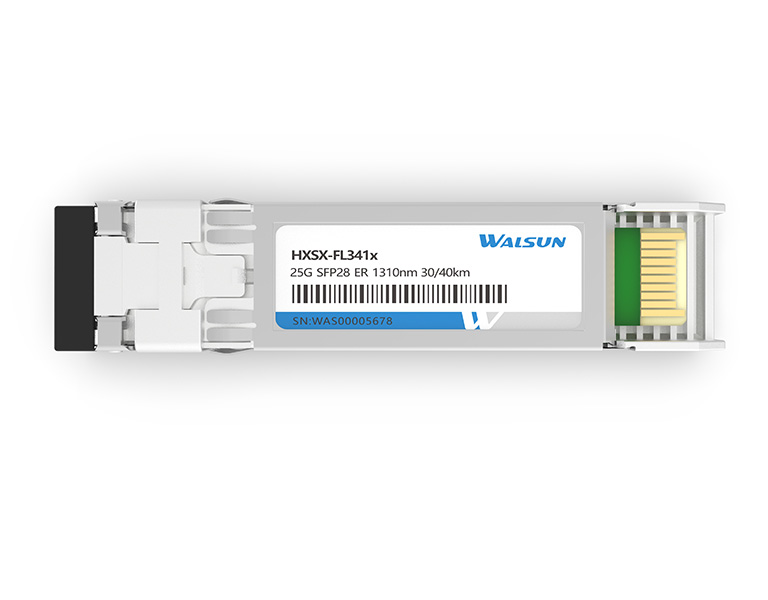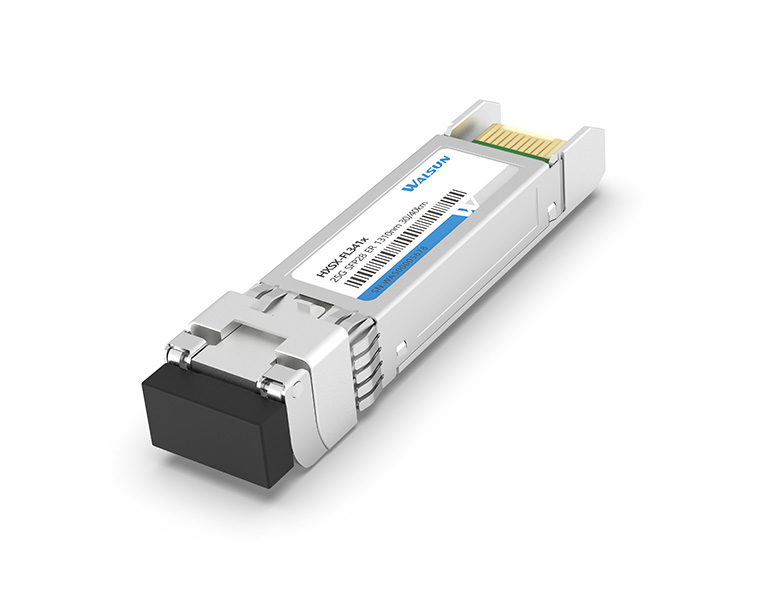

 Industry Dynamic +
Industry Dynamic +  2023.10.31
2023.10.31The rapid development of 100G Ethernet brings huge market demand for 100G optical modules. Among many 100G optical modules, QSFP28 optical module becomes the most popular optical module with its smaller size and low power consumption. ETU-LINK will introduce QSFP28-100G-LR4 optical module from the perspective of definition, working principle, application scenario and FAQ.
Definition:
QSFP28-100G-LR4 is a hot-swappable full-duplex optical module, compliant with IEEE 802.3ba standard, with dual LC interfaces and operating wavelengths of 1295, 1300, 1304, and 1309nm, which is specially designed for long-distance transmission of 100G Ethernet, and it can reach a transmission distance of 10km on single-mode fibre optic patch cord.

100G QSFP28 LR4 Optical Module Features
100G QSFP28 LR4 optical module is mainly composed of the first clock data recovery module, array driver module, laser transmitter module, optoelectronic conversion module and electrical signal processing module, the following we will briefly analyse its working principle.
To learn more about optical module packaging you can refer to this article:25G SFP28 LR
1, first of all, the data recovery module will input 100G signal data recovery processing, and then the processed electrical signal input to the array driver module;
2, the array driver module will then receive the electrical signal modulation demodulation processing, and then transmitted to the laser transmitter module;
3, in this part of the laser transmitter module, the electrical signal will be converted into an optical signal, and then be coupled into the optical fibre;
4, the coupled optical signal will be transmitted to the photoelectric conversion module, and then once again converted into an electrical signal and output to said electrical signal processing module;
5, finally the electrical signal processing module is used to output the electrical signals to the main control terminal after converting the electrical signals into voltage by current and amplifying them in turn.

The 100G QSFP28 LR4 optical module has four transmission channels, and since it transmits 100G signals, it will divide the 100G electrical signals into four electrical signals and transmit them in the form of 4*25G electrical signals. As can be seen from the above analysis, after the optical fibre transmits the optical signal into the photoconductor array, the receiving end needs to modulate and demodulate the optical signal, and convert the optical signal into a weak current signal by means of the photoelectric effect principle of the photoconductor array. The current signal is then converted into a voltage signal by the output transimpedance amplifier 108, and then the voltage signal is converted into an electrical signal that can be received by the main control terminal 105 by limiting amplification of the voltage signal by the output limiting amplifier 109.
Therefore, it is feasible for the 100G QSFP28 LR4 optical module to achieve four 25G high-speed signal transmission. That is, the TX at the transmitting end outputs four 25G optical signals through the conversion of the QSFP, and the RX at the receiving end receives the four 25G optical signals and outputs the four 25G electrical signals through the conversion of the QSFP, so as to realise the photoelectric conversion of 100 signals.
Working Principle:
Convert 4-channel 25Gbps electrical signals into 4-channel LAN WDM optical signals, and then use MUX or WDM to multiplex them into a single channel to achieve 100G optical signal transmission. At the receiving end, the module adopts DEMUX to demultiplex the 100G optical input into 4-channel LAN WDM optical signals, and then converts them into 4-channel electrical signals before outputting the channel.
Application Scenario:
QSFP28-100G-LR4 optical module is very suitable for long distance connection in data centre and enterprise network, the 100G optical module supplied by Walsun (ETU-LINK) can be widely used in Huawei, Ruijie, Cisco, H3C, ZTE and other brands of switches in data centre room.
Frequently Asked Questions:
Q1: Can QSFP28-100G-LR4 be connected with 100G CFP LR4 optical module?
A1: Both of them have 100G transmission rate and work on the same working wavelength (1310nm), so they can be connected with each other.
Q2:Does Walsun QSFP28-100G-LR4 optical module provide customised service?
A2:Walsun QSFP28-100G-LR4 optical modules are available for customisation, just provide the compatible brand and model.
Q3:Can QSFP28-100G-LR4 connect with 25G LR?
A3:No, because they have different standards and different working wavelengths, so they can't be connected.
Subscribe to the newsletter
for all the latest updates.
2-5# Building, Tongfuyu Industrial Zone, Aiqun Road, Shiyan Street, Baoan District, Shenzhen. China
